Home>Articles>How To Store Your Wedding Dress Before The Wedding
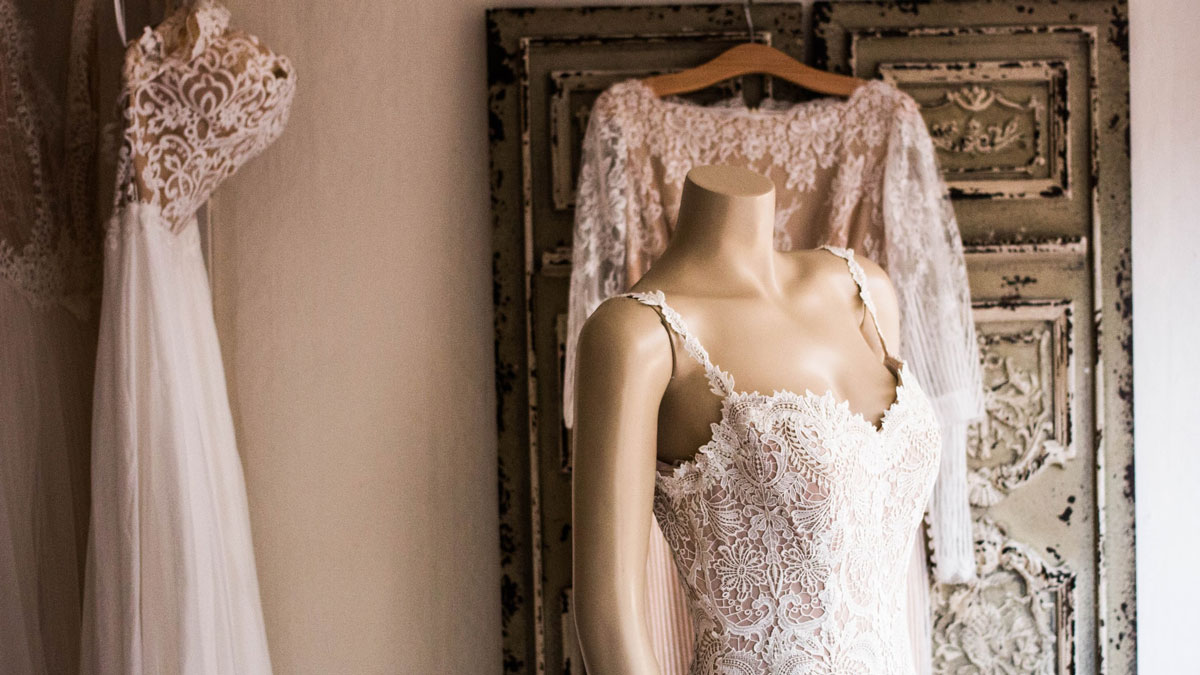

Articles
How To Store Your Wedding Dress Before The Wedding
Modified: January 6, 2024
Discover the best articles on how to properly store your wedding dress before the big day. Get expert tips and advice to keep your gown safe and pristine.
(Many of the links in this article redirect to a specific reviewed product. Your purchase of these products through affiliate links helps to generate commission for Storables.com, at no extra cost. Learn more)
Introduction
Congratulations on your upcoming wedding! As you prepare for the big day, one important aspect to consider is the storage of your wedding dress. Proper dress storage is crucial to ensure that your gown stays in pristine condition, ready for you to wear it on your special day. In this article, we will guide you through the process of storing your wedding dress before the wedding, including choosing the right storage location, preparing your dress for storage, and tips for hanging or using alternative storage methods.
Wedding dresses are not just ordinary garments; they hold immense sentimental value. From the intricate lace to the delicate beading, every detail is carefully chosen to make you look and feel beautiful on your wedding day. Whether you plan to pass down your dress as a family heirloom or simply want to preserve it as a cherished memory, proper dress storage is essential.
Choosing the right storage location is the first step in ensuring the longevity of your wedding dress. Ideally, you should store your gown in a cool, dry, and dark place, away from direct sunlight and extreme temperature fluctuations. Avoid storing it in attics, basements, or areas prone to high humidity, as these conditions can promote mold, mildew, and discoloration of the fabric.
Before storing your dress, it is essential to prepare it properly. Start by ensuring that the gown is clean. Schedule a professional cleaning or follow the manufacturer’s instructions for at-home cleaning. Removing any stains or dirt will prevent them from setting in and causing irreversible damage during storage. Be sure to inform the cleaner about any specific stains or delicate embellishments, so they can treat the dress with the necessary care.
Once your gown is clean and dry, it’s time to store it. The best way to protect your wedding dress is to store it in a breathable garment bag. Choose a high-quality, acid-free, and pH-neutral garment bag to prevent any chemical reactions that could harm the fabric. Hang the dress in a spacious area, ensuring that it is not compressed or crushed by other items in your closet.
If you choose to hang your dress, use a padded hanger that will distribute the weight evenly and avoid putting stress on the shoulders. Fasten any buttons, zippers, or hooks to prevent them from snagging or tearing the delicate fabric. Cover the dress with a muslin or cotton sheet to further protect it from dust and light exposure.
Alternatively, you can opt for alternative storage methods if hanging is not feasible. Folding your dress properly can be tricky, but one method is to gently fold it into a acid-free tissue paper before placing it in a sealed archival box. Avoid folding the dress in sharp creases, as this can create permanent wrinkles.
When storing your dress, always be mindful of common mistakes that can damage the fabric. Avoid using plastic garment bags or vacuum-sealed storage bags, as they can trap moisture and promote mold growth. Additionally, refrain from using chemical mothballs or sachets, as the chemicals can transfer onto the fabric and cause discoloration.
Before the wedding, remember to periodically check on your dress in storage. Inspect for any signs of damage, discoloration, or pests. If necessary, consult a professional gown preservation service for advice on how to address any issues.
Finally, as the big day approaches, it’s time to unpack your dress. Give yourself enough time to hang the gown and allow any wrinkles from storage to naturally release. If needed, consult a professional steam or press service to ensure that your dress looks flawless on your wedding day.
By following these steps, you can rest assured knowing that your wedding dress will be beautifully preserved and ready to make you shine on your special day. Store it with care, and it will continue to hold the memories of your special day for years to come.
Key Takeaways:
- Proper dress storage is crucial to preserve your wedding gown’s sentimental value, maintain its pristine condition, and ensure it remains a cherished memento for years to come.
- Choosing the right storage location, preparing the dress properly, and monitoring it regularly are essential steps to safeguard your wedding dress and maintain its beauty.
Read more: How To Store Wedding Dress Before Wedding
Why Proper Dress Storage is Important
Your wedding dress is more than just a piece of clothing; it is a symbol of one of the most important days of your life. Proper dress storage is essential to ensure that your gown remains in pristine condition, ready for you to wear on your wedding day and to preserve it as a cherished keepsake for years to come. Here are a few reasons why proper dress storage is important:
- Preservation of Memories: Your wedding dress holds memories and emotions that are attached to your special day. By storing it properly, you can ensure that it remains a beautiful reminder of the love and joy you experienced on your wedding day.
- Longevity: Proper dress storage can extend the lifespan of your gown, allowing it to be passed down through generations as a family heirloom. With the right care, your wedding dress can be cherished by your loved ones for years to come.
- Pristine Condition: Storing your dress correctly helps to maintain its original beauty. It protects the fabric from dust, dirt, and light exposure, preventing discoloration and damage that can occur over time. This ensures that your dress looks as stunning on your wedding day as it did when you first tried it on.
- Preventing Damage: Improper dress storage can lead to a variety of issues such as mold, mildew, insect infestation, or fabric deterioration. By storing your gown in the right conditions, you can prevent these damages and avoid costly repairs or replacements.
- Resale Value: If you plan to sell your wedding dress after the wedding day, proper storage is crucial to maintaining its value. A well-preserved dress will fetch a higher resale price and attract potential buyers who appreciate the quality and condition of a carefully stored gown.
Proper dress storage is not a one-time task; it requires ongoing attention and care. By following the guidelines for storage, you can ensure that your wedding dress remains a cherished memento, a symbol of love, and a beautiful reminder of your special day. Take the time and effort to store your dress correctly, and you will be rewarded with a gown that continues to evoke the emotions and memories of your wedding day for years to come.
Choosing the Right Storage Location
When it comes to storing your wedding dress, selecting the right storage location is vital for maintaining its condition and preserving its beauty. Here are some factors to consider when choosing the ideal storage location:
- Temperature and Humidity: Opt for a storage area that is cool and dry, with moderate humidity levels. Extreme temperatures and high humidity can damage the fabric, leading to mold, mildew, or discoloration. Avoid storing your dress in attics, basements, or areas prone to temperature fluctuations or excessive moisture.
- Light Exposure: Direct sunlight can cause fading, discoloration, and deterioration of the fabric. Choose a storage location that is away from natural light or use blackout curtains to block out any sunlight that may enter the area.
- Avoid Dust and Odors: Keep your dress away from areas with excessive dust or strong odors. Dust particles can settle on the fabric and create stains or damage over time. Strong odors can permeate the dress and be challenging to remove.
- Space and Accessibility: Ensure that the storage location has ample space to hang or store your dress without it being compressed or crushed by other items. Avoid overcrowding the storage area to allow for airflow around your gown. Additionally, make sure the storage area is easily accessible so you can periodically check on your dress or make any necessary adjustments.
- Pest Control: Take precautions to protect your dress from potential pests, such as moths or insects. Use lavender sachets or cedar blocks to deter pests, but avoid using chemical mothballs, as they can transfer onto the fabric and cause discoloration.
Consider these factors when choosing the right storage location for your wedding dress. Remember that the goal is to create a controlled environment that protects your gown from damaging elements. By selecting a suitable storage location, you can ensure that your dress remains in excellent condition, ready to be cherished and worn on your special day.
Preparing Your Dress for Storage
Before you store your wedding dress, it is crucial to prepare it properly to ensure it remains in pristine condition. Here are important steps to follow when preparing your dress for storage:
- Cleaning: Schedule a professional cleaning for your wedding dress, or carefully follow the manufacturer’s instructions for at-home cleaning. Even if your dress appears clean, there may be hidden stains or dirt that, if left untreated, can set into the fabric and become more difficult to remove later. Inform the cleaner about any specific stains or delicate embellishments, ensuring they are treated with the necessary care.
- Inspect for Damage: Before storing your dress, carefully inspect it for any damage or loose threads. Look for missing buttons, loose beads, or any signs of tears or damage. Address any repairs before storing the gown to prevent further damage during storage.
- Packing Materials: Invest in high-quality packing materials to protect your dress during storage. Acid-free tissue paper and muslin or cotton sheets are excellent choices to wrap and cover delicate areas, ensuring they do not come into contact with other parts of the dress. These materials are breathable and prevent the fabric from yellowing or developing creases.
- Stuffing: If your wedding dress has full-bodied skirts or layers, use acid-free tissue paper to stuff them. This will help preserve their shape and prevent them from flattening or losing volume.
- Hanging Straps: Use the dress’s hanging straps to support its weight when lifting or moving it. Avoid lifting the dress by the delicate elements such as beading or embroidery, as excessive stress on these areas can cause damage.
By following these steps, you can ensure that your wedding dress is properly prepared for storage. Taking the time to clean, inspect, and protect your gown will help maintain its beauty and prevent any potential damage during the storage period. With the right preparations, your dress will be ready to shine on your wedding day and continue to be a cherished keepsake for years to come.
Storing Your Dress in a Garment Bag
One of the best ways to protect your wedding dress during storage is by using a breathable garment bag. Here are some important steps to follow when storing your dress in a garment bag:
- Choose the Right Garment Bag: Select a high-quality, acid-free, and pH-neutral garment bag specifically designed for wedding gown storage. These bags are made of breathable materials that allow air circulation while preventing dust, dirt, and light from damaging the dress. Avoid plastic garment bags, as they can trap moisture and lead to mold or mildew growth.
- Clean and Dry: Ensure that your wedding dress is clean and completely dry before placing it in the garment bag. Any residual moisture can lead to mold or mildew, so it’s important to allow ample time for the dress to dry after cleaning.
- Hang Your Dress: Hang the dress in the garment bag on a sturdy, padded hanger to support its weight without causing stress on the shoulders. Avoid wire hangers or thin plastic hangers, as they can distort the shape of your dress. A padded hanger will help distribute the weight evenly and prevent any indentations on the fabric.
- Fasten Buttons and Zippers: Before placing your dress in the garment bag, ensure that all buttons, zippers, or hooks are securely fastened. This will prevent them from snagging on the fabric or causing any damage during storage.
- Cover with a Cotton Sheet or Muslin: Protect your dress from light exposure and dust by covering it with a clean, muslin or cotton sheet. This additional layer will keep your dress safe and prevent any potential damage from sunlight or debris.
- Store in a Safe Location: Hang your garment bag in a spacious area away from direct sunlight and extreme temperature fluctuations. Make sure it is not crowded or compressed by other items in your closet. Choose a location where the dress will remain undisturbed and won’t be accidentally crushed or damaged.
Storing your dress in a garment bag provides an added layer of protection against dust, light, and potential damage. By choosing the right bag and following the proper storage techniques, you can ensure that your wedding dress remains in pristine condition, ready to be worn on your special day.
Store your wedding dress in a cool, dry place away from direct sunlight. Hang it on a padded hanger or lay it flat in a breathable garment bag to prevent wrinkles and yellowing.
Tips for Hanging Your Dress
Hanging your wedding dress properly is essential to preserve its shape and prevent any damage. Here are some helpful tips for hanging your dress:
- Use a Padded Hanger: Choose a sturdy, padded hanger to hang your dress. A padded hanger will help distribute the weight evenly, preventing any stress or strain on the fabric. Avoid using wire hangers or thin plastic hangers, as they can distort the shape of your dress.
- Hang by the Waistline: Use the waistline or bodice of the dress to hang it on the hanger. This will minimize stress on the shoulders and prevent any stretching or distortion of the gown’s silhouette.
- Avoid Using Clips: Refrain from using clips or clothespins to secure your dress on the hanger. Clips can leave marks or indentations on the fabric, especially if they are left for an extended period. Instead, rely on the dress’s hanging straps to support its weight.
- Space Out Dresses: If you are hanging multiple dresses in the same storage space, make sure to provide enough room for each dress to hang freely without touching or overlapping. This will prevent any abrasion or snagging between dresses.
- Remove Plastic Dry Cleaning Bags: If your dress is already placed in a plastic dry cleaning bag, remove it before hanging the dress. Plastic bags can trap moisture and create a humid environment, leading to mold or mildew growth.
- Allow for Air Circulation: Ensure that there is ample space around your dress for proper air circulation. This will help prevent any stagnant air from causing moisture buildup and promote the longevity of the fabric.
- Regularly Inspect and Adjust: Periodically check on your dress while it is hanging. Look for any signs of damage or stress on the fabric. If necessary, adjust the dress to avoid any areas where the weight may be causing pressure on the fabric.
Following these tips will help ensure that your wedding dress hangs beautifully and remains in excellent condition during storage. By taking the time to hang your dress properly, you will preserve its shape, minimize the risk of damage, and be ready to make a stunning entrance on your wedding day.
Alternatives to Hanging
While hanging your wedding dress is a popular method of storage, there are alternative options to consider if hanging is not feasible or suitable for your dress. Here are some alternatives to hanging:
- Folding: If your dress is made of a non-structured or less rigid fabric, folding it properly can be a suitable option. Gently fold the dress, taking care to avoid sharp creases that could lead to permanent wrinkles. Place acid-free tissue paper between the folds to protect delicate embellishments and avoid any fabric-on-fabric contact.
- Stacking: If you have limited hanging space, stacking your wedding dress can be a practical alternative. Lay the dress flat on a clean, flat surface, ensuring it is not compressed or weighted down by other items. Use acid-free tissue paper to place between the layers to prevent any friction or abrasion.
- Archival Box: Consider storing your dress in an archival box designed specifically for preserving wedding gowns. These boxes are made of acid-free and pH-neutral materials, preventing any chemical reactions that could harm the fabric. Gently fold your dress, following the guidelines mentioned earlier, and place it in the box with acid-free tissue paper for added protection.
- Vacuum Seal Bags (with caution): Vacuum seal bags can be an option if used with caution. These bags can significantly reduce the storage space needed, but they should only be used for a short-term solution. Be mindful that the vacuum sealing process can flatten the dress and create permanent creases if kept for an extended period. Use this method sparingly and temporarily, especially for dresses with voluminous skirts or delicate detailing.
- Professional Preservation: If you want to ensure the optimal preservation of your wedding dress, consider entrusting it to a professional gown preservation service. These experts will clean, repair, fold, and package your dress in acid-free materials, ensuring its protection and longevity. They will have the knowledge and experience to store your dress correctly, using specialized techniques and materials.
When considering an alternative to hanging your wedding dress, it’s important to carefully evaluate the fabric, structure, and specific needs of your gown. Each alternative has its own advantages and considerations, so choose the method that best suits your dress and storage space. Remember, the goal is to preserve your wedding dress’s condition and integrity, allowing you to cherish it for years to come.
Avoiding Common Mistakes in Dress Storage
When it comes to storing your wedding dress, certain mistakes can lead to damage or deterioration of the fabric over time. To ensure the long-term preservation of your gown, here are some common mistakes to avoid:
- Using Plastic Garment Bags: Plastic garment bags can trap moisture and create a humid environment, leading to mold or mildew growth. Instead, opt for breathable, acid-free garment bags specifically designed for wedding dress storage.
- Exposing to Sunlight: Direct sunlight can cause the fabric of your dress to fade and deteriorate over time. Avoid storing your dress in areas where it will be exposed to sunlight, and consider using blackout curtains or blinds to block out any natural light.
- Using Mothballs or Chemical Sachets: Avoid using mothballs or chemical sachets as they can transfer chemicals onto the fabric of your dress, causing discoloration or damage. Instead, opt for natural alternatives like lavender sachets or cedar blocks to deter pests.
- Storing in Attics or Basements: Attics and basements are prone to temperature fluctuations and high humidity levels, which can lead to damage, mold, or mildew growth. Choose a cool, dry, and dark storage area that is away from these potentially damaging conditions.
- Skipping Professional Cleaning: Even if your dress appears clean, it is crucial to have it professionally cleaned or follow the manufacturer’s instructions for at-home cleaning before storing it. Stains or oils left on the fabric can set in over time, becoming more difficult to remove later.
- Skipping Pre-Storage Inspection: Before storing your dress, take the time to inspect it for any loose threads, missing buttons, or signs of damage. Address any repairs or alterations promptly to prevent further damage during storage.
- Using Wire Hangers: Wire hangers are not suitable for hanging wedding dresses. They lack the necessary support and can distort the shape of the dress over time. Opt for padded hangers that distribute the weight evenly and provide proper support.
- Storing with Accessories: Avoid storing your dress with accessories such as veils, belts, or jewelry that could snag or damage the delicate fabric. Store these items separately in protective coverings to prevent any potential harm.
By avoiding these common mistakes in dress storage, you can ensure that your wedding dress remains in excellent condition, ready for you to wear or preserve as a cherished keepsake. Take the time to properly prepare and store your gown, and it will retain its beauty for years to come.
Monitoring Your Dress in Storage
While your wedding dress is in storage, it’s important to periodically monitor it to ensure that it remains in optimal condition. Here are some key steps to follow when monitoring your dress in storage:
- Regular Inspections: Check on your dress every few months to assess its condition. Look for any signs of damage, discoloration, or pests. Early detection can help prevent further issues and allow for timely intervention.
- Handling with Clean Hands: Before inspecting your dress, make sure your hands are clean and free from any lotions or oils. This will help avoid transferring any substances onto the fabric and prevent potential stains or damage.
- Keep Tabs on Temperature and Humidity: Ensure that the storage area maintains a cool, dry, and stable environment. Extreme temperature fluctuations and high humidity can adversely affect the fabric, leading to mold, mildew, or discoloration.
- Check for Pests: Inspect your dress for any signs of pests such as moths, insects, or rodents. Look for droppings, webbing, or any visible damage. If you spot any pests, take immediate action to eliminate them and consider consulting a professional for assistance.
- Address Issues Promptly: If you notice any damage or issues during your inspections, take prompt action to prevent further deterioration of your dress. Consult a professional preservationist or seamstress for advice on how to address any issues and ensure proper care.
- Document Changes: Keep a record of your dress’s condition by taking photos during each inspection. This will help you track any changes or issues that may arise over time.
- Consider Professional Preservation: If you’re unsure about properly monitoring and preserving your dress, consider consulting a professional gown preservation service. They have the expertise and knowledge to assess and maintain your dress’s condition more effectively.
By actively monitoring your dress in storage, you can identify and address any issues before they escalate. Regular inspections, proper environmental conditions, and timely intervention will help preserve your wedding dress’s beauty and ensure that it remains in excellent condition for years to come.
Read more: How To Store Your Wedding Dress
Unpacking Your Dress Before the Wedding
As your wedding day approaches, it’s time to unpack your dress and ensure that it looks flawless and ready to be worn. Here are some helpful steps to follow when unpacking your dress before the wedding:
- Choose a Clean and Safe Area: Find a clean and spacious area where you can unpack your dress without any risk of staining or damaging it. Ensure that the area is free from any liquids, food, or potential hazards that could compromise the dress.
- Wash Your Hands: Before handling your dress, wash your hands thoroughly to remove any oils, lotions, or dirt that could transfer onto the fabric. Dry your hands completely or use clean, dry gloves if preferred.
- Inspect and Steam: Take a moment to inspect your dress for any wrinkles or creases that may have occurred during storage. Use a handheld steamer, set on the appropriate heat and steam setting, to gently release any wrinkles. Move the steamer in a sweeping motion, keeping the nozzle at a safe distance from the fabric to avoid any water spots or damage.
- Allow Sufficient Time: Unpack your dress well in advance of your wedding day to allow ample time for any necessary alterations, adjustments, or final touch-ups. Rushing the process may cause unnecessary stress and could prevent you from addressing any unforeseen issues that may arise.
- Hang with Care: Hang your dress in a safe location, ensuring that it doesn’t come into contact with any sharp objects or surfaces that could snag or damage the fabric. Use a sturdy, padded hanger to support the weight of the dress and maintain its shape.
- Keep the Dress Elevated: Avoid resting your dress on the floor or dragging the train or hemline against any dirty or abrasive surfaces. Consider using a garment rack or keeping the dress elevated to protect it from any potential damage.
- Final Touches: Take this opportunity to add any final touches to your dress, such as attaching the veil, securing the train, or adjusting the bustle. Ensure that all elements are in place and properly secured for a flawless bridal look.
Unpacking your dress before your wedding is a crucial step in making sure that it looks perfect and ready to be worn on your special day. By following these steps and taking your time to inspect, steam, and hang your dress with care, you can ensure that it looks stunning as you walk down the aisle, creating a lasting impression and beautiful memories to cherish.
Frequently Asked Questions about How To Store Your Wedding Dress Before The Wedding
Was this page helpful?
At Storables.com, we guarantee accurate and reliable information. Our content, validated by Expert Board Contributors, is crafted following stringent Editorial Policies. We're committed to providing you with well-researched, expert-backed insights for all your informational needs.


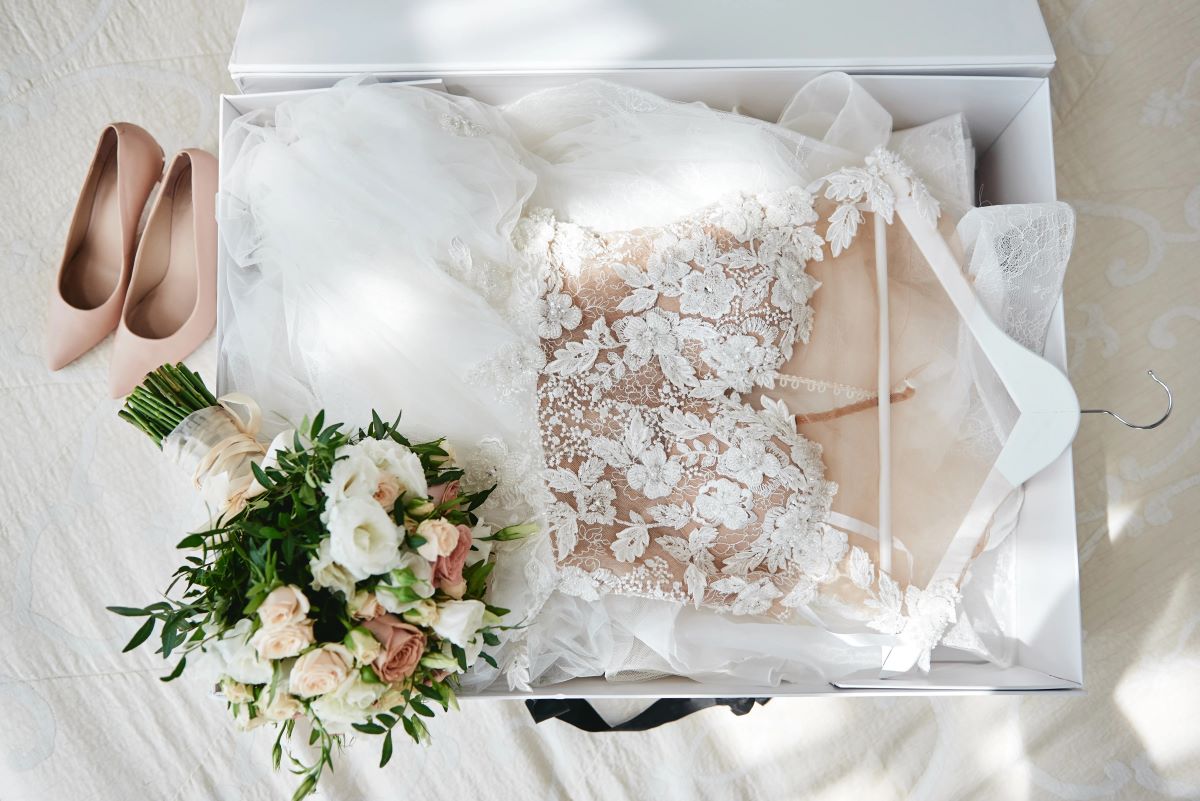

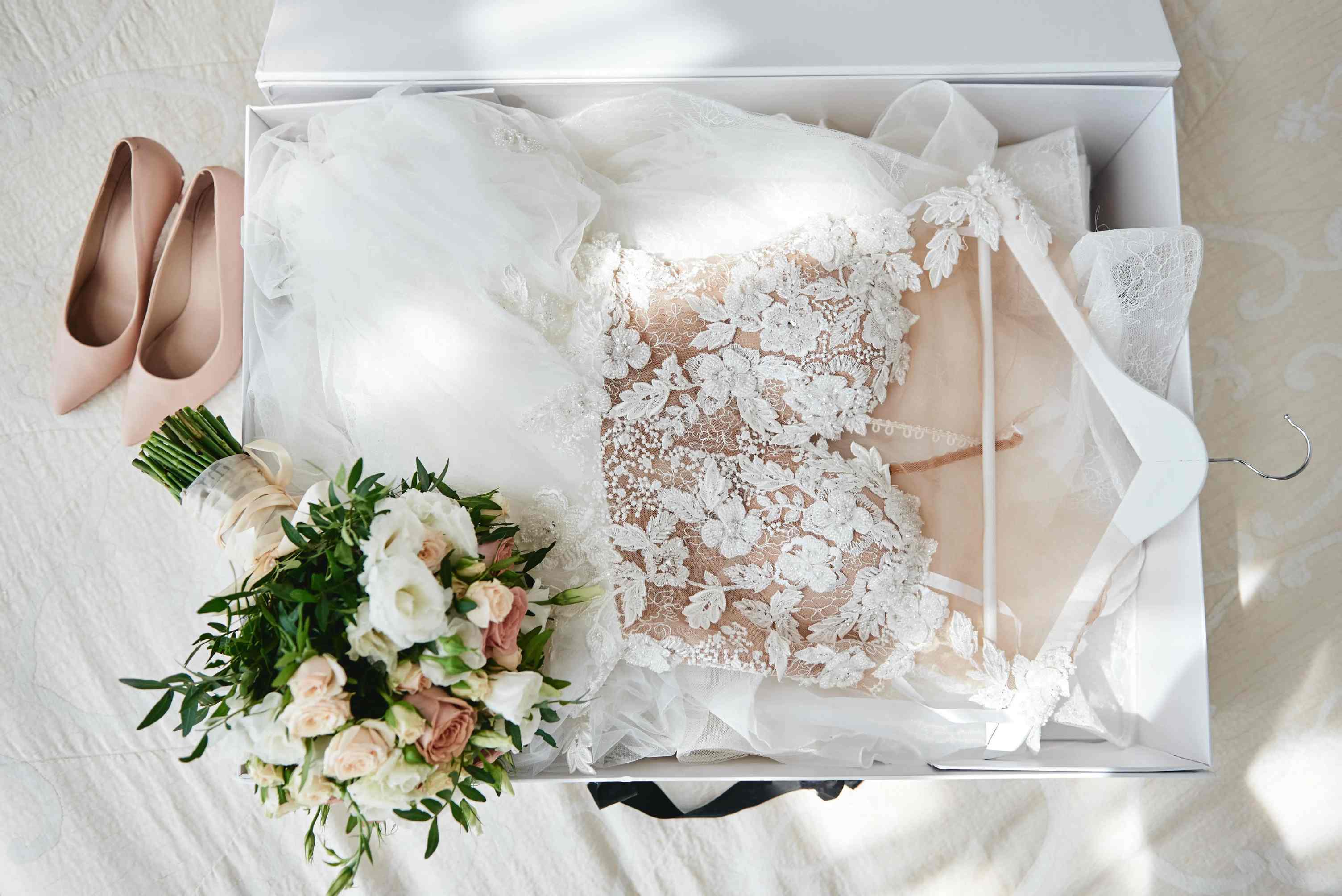
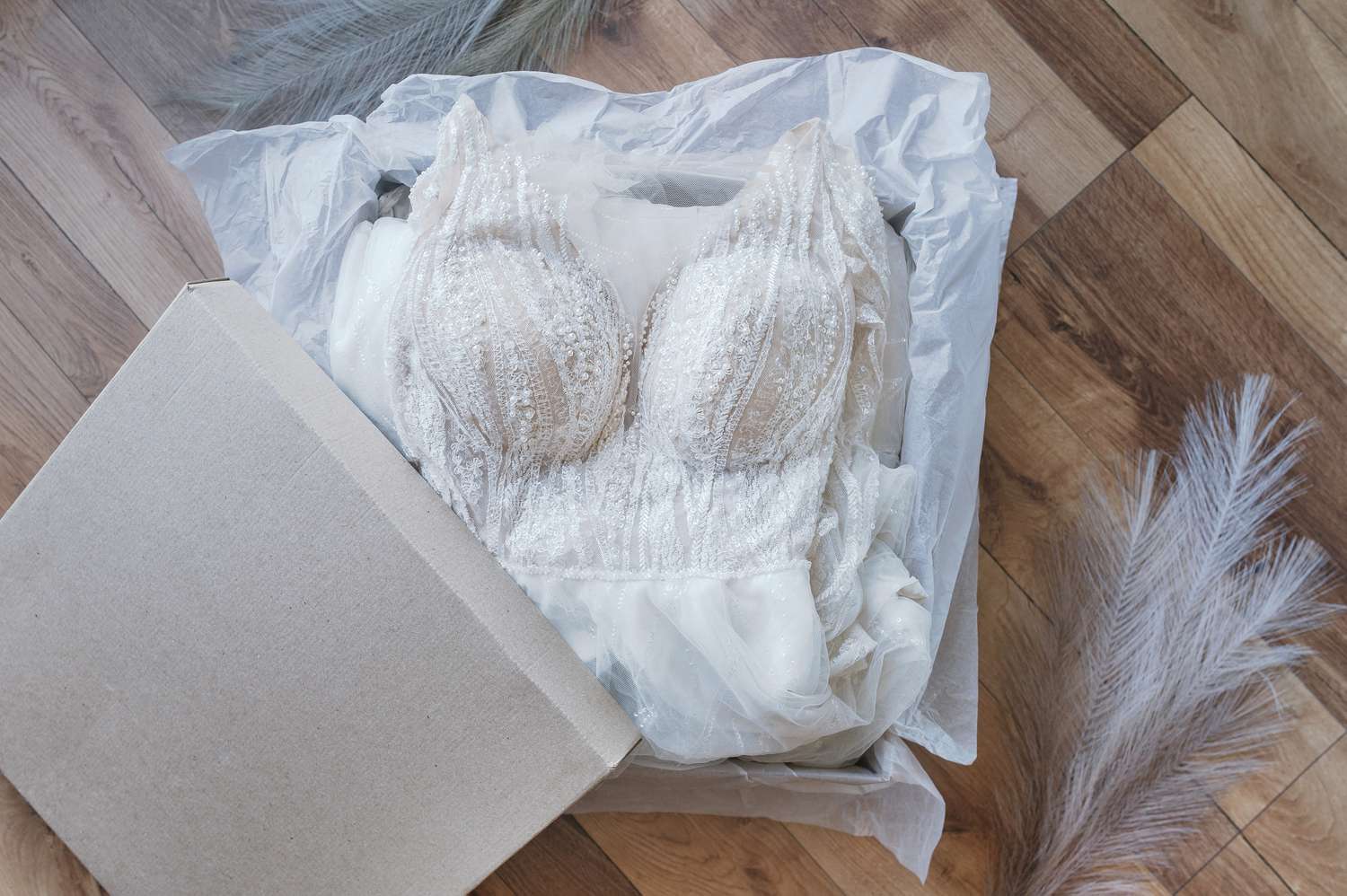
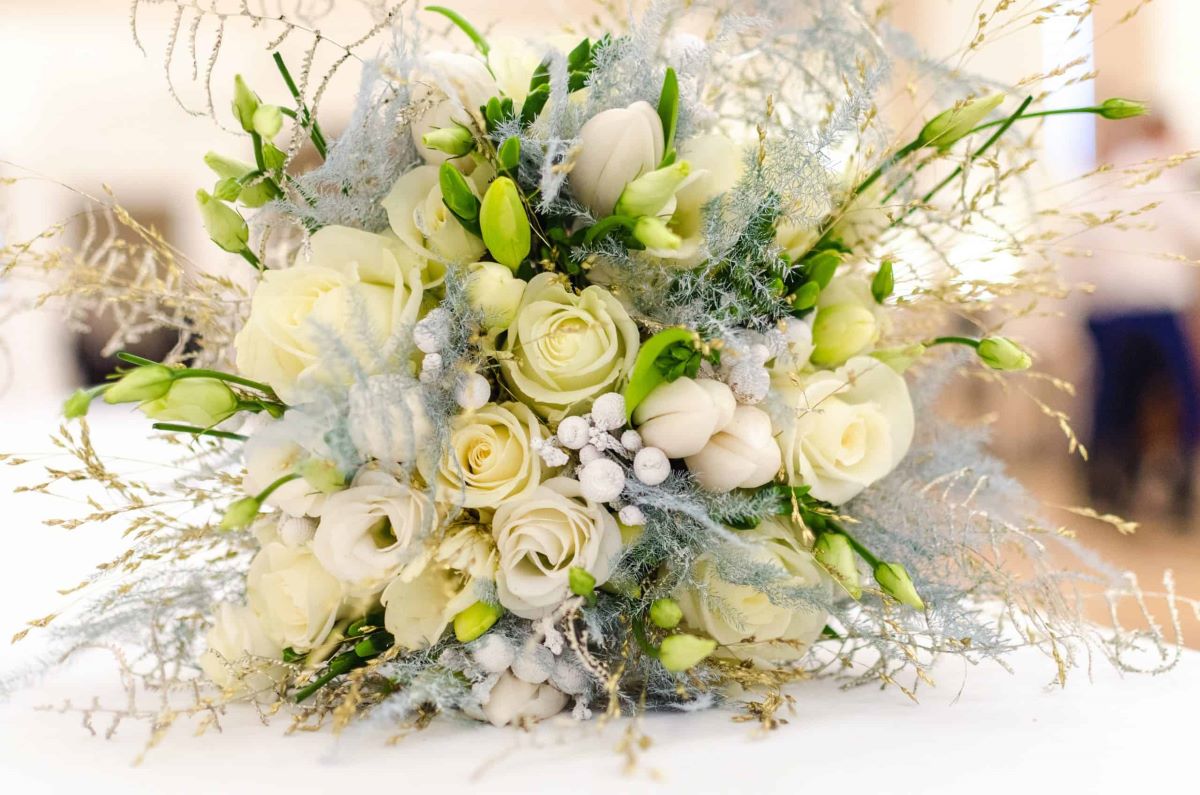







0 thoughts on “How To Store Your Wedding Dress Before The Wedding”